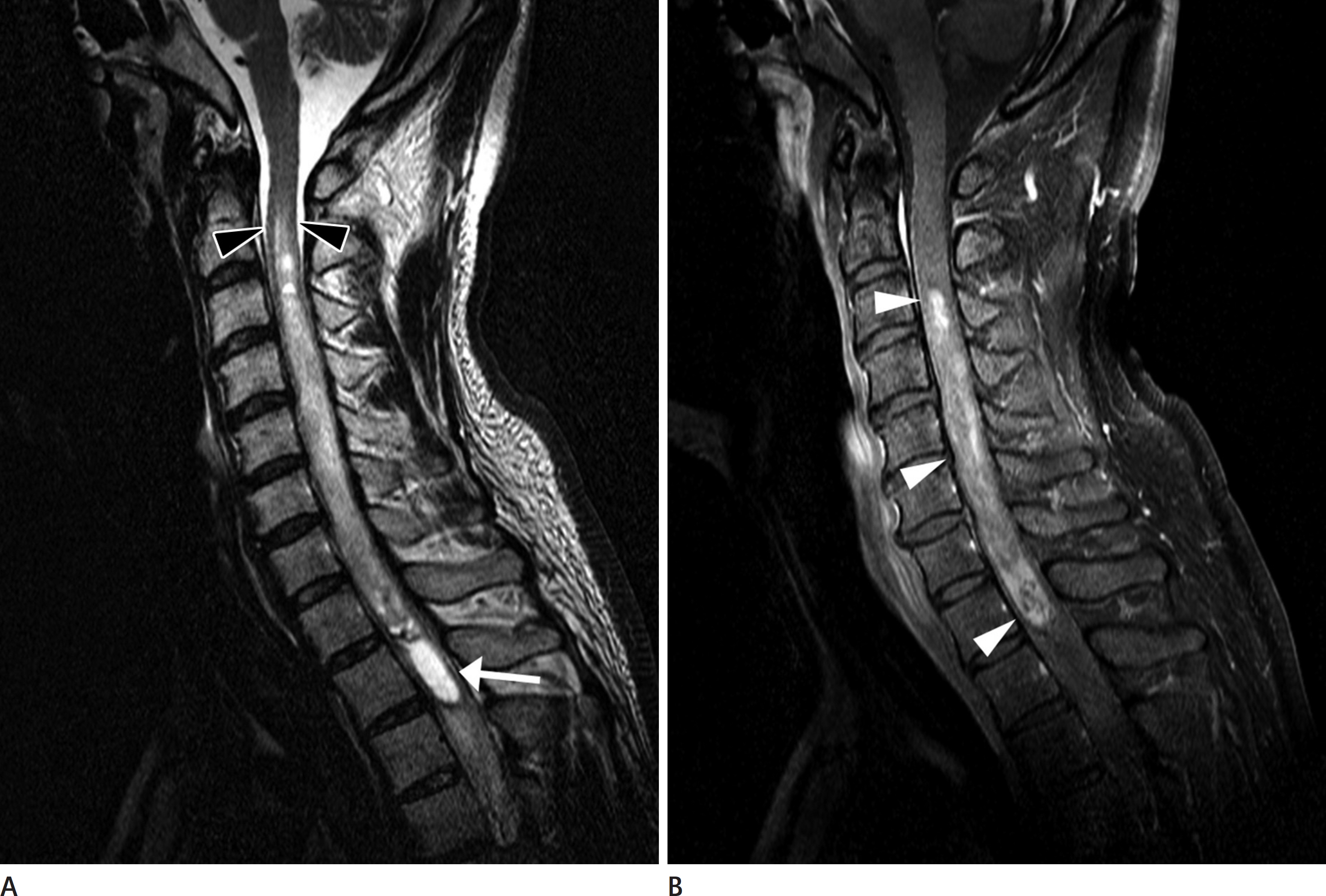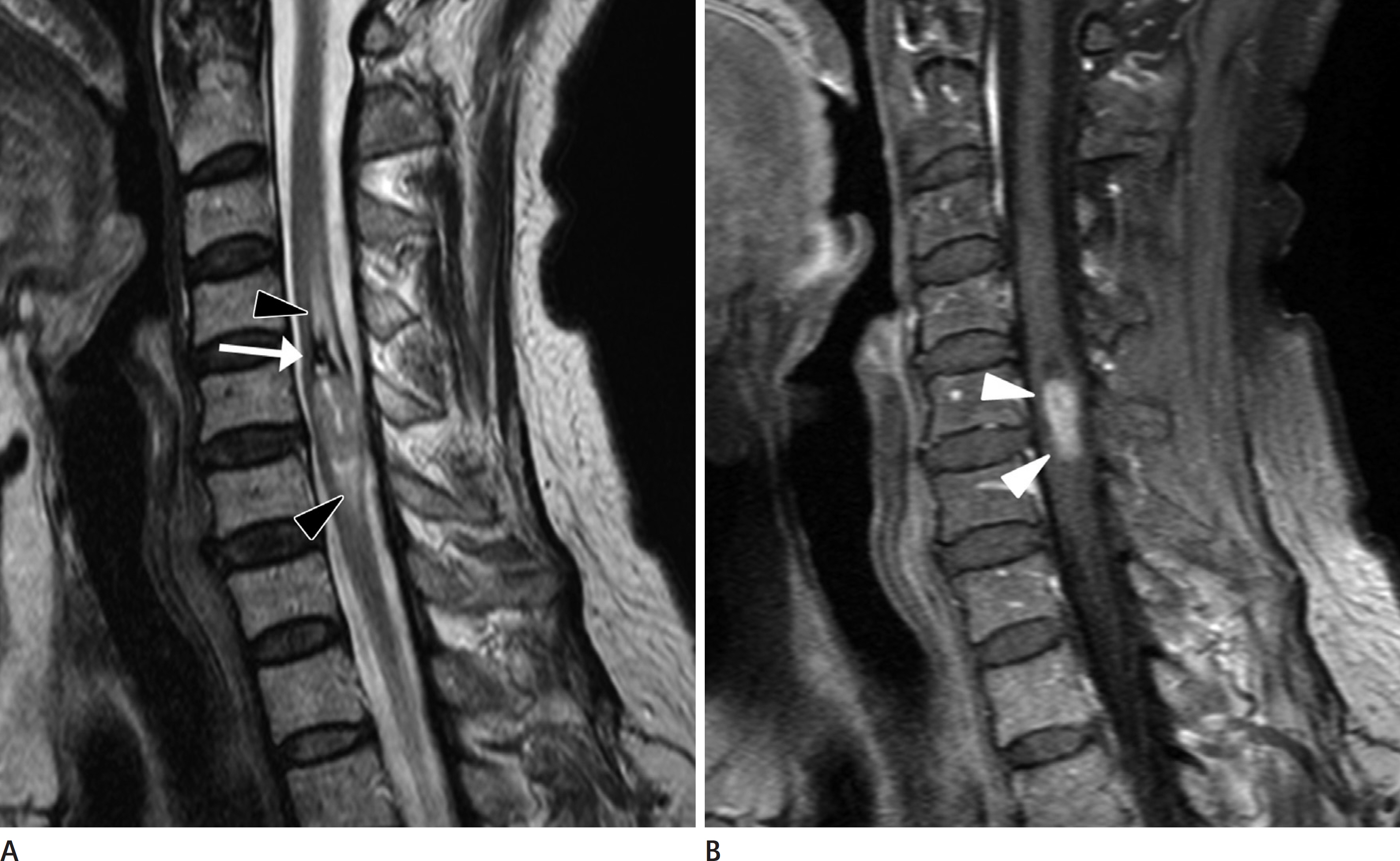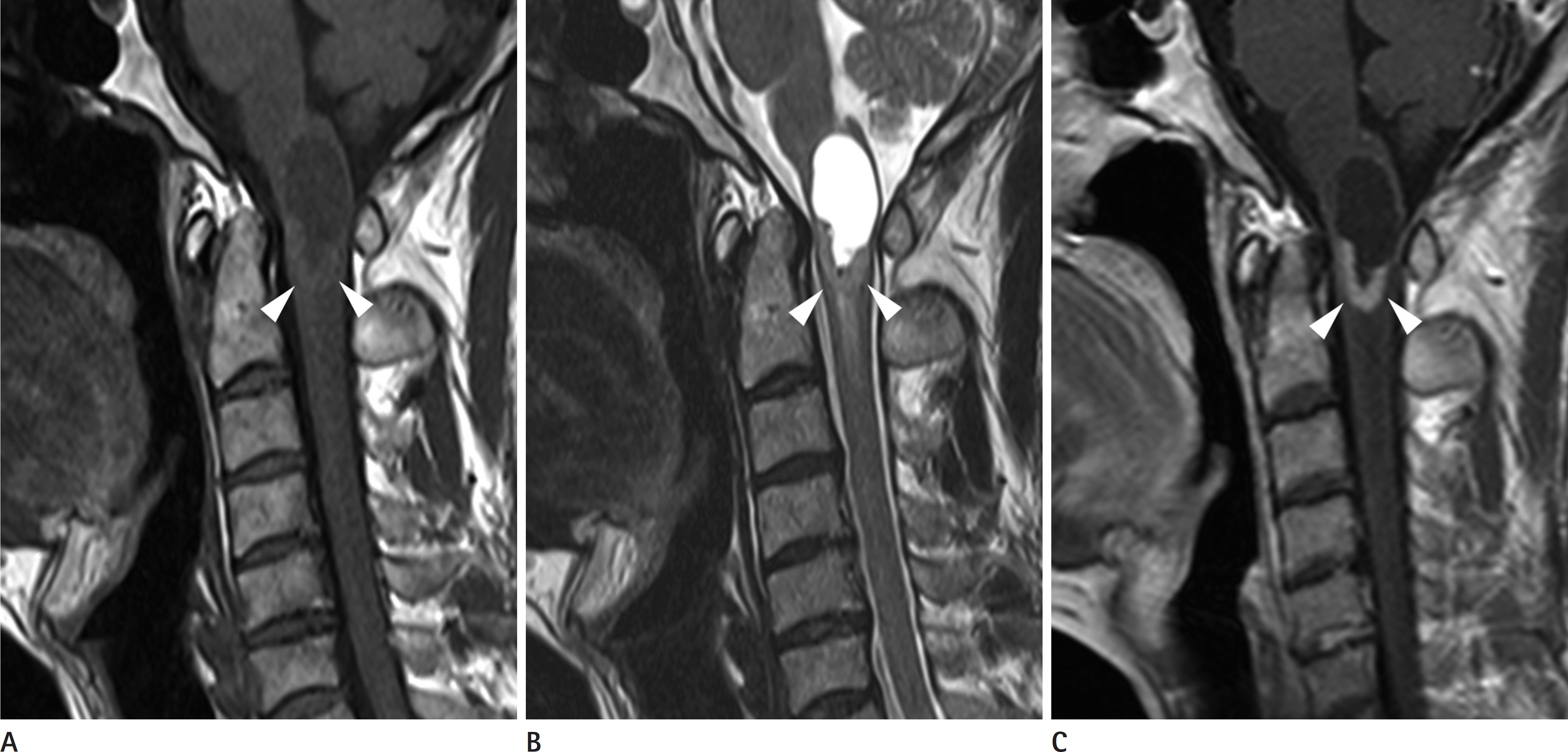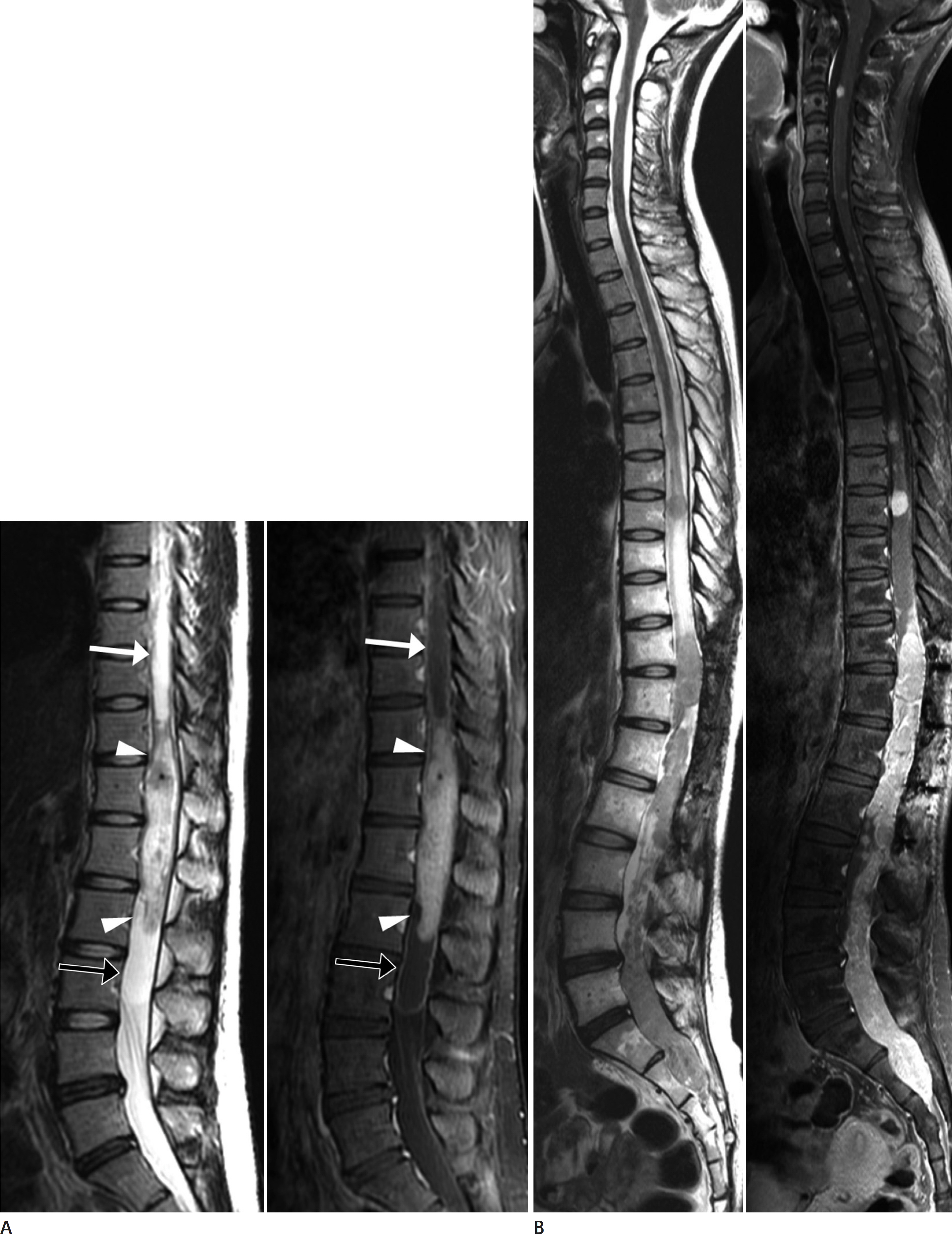J Korean Soc Radiol.
2017 Jun;76(6):411-419. 10.3348/jksr.2017.76.6.411.
Various MRI Findings of Spinal Ependymoma
- Affiliations
-
- 1Department of Radiology, Seoul National University Bundang Hospital, Seongnam, Korea. eugene801027@gmail.com
- 2Department of Neurosurgery, Seoul National University Bundang Hospital, Seongnam, Korea.
- KMID: 2379323
- DOI: http://doi.org/10.3348/jksr.2017.76.6.411
Abstract
- PURPOSE
To present the typical and atypical magnetic resonance image (MRI) findings of intramedullary spinal ependymomas, and compare these findings with pathological subtypes.
MATERIALS AND METHODS
Between January 2003 to November 2014, 47 patients who had spinal ependymoma with pathologic confirmation, were retrospectively reviewed with all electronic medical records and MR images. MR imaging was done in all cases, and the images of spinal ependymomas and associated enhancement patterns were correlated with pathologic findings.
RESULTS
The enhancement patterns were categorized into four categories: homogeneous, heterogeneous, rim-enhancement, and non-enhancement. Heterogeneous enhancement was observed in 50% of the cases. Among the 47 cases, 35 cases were well-marginated, with 21 being cervically located. All lesions were centrally located in the axial axis. Most of the cases showed T1-iso signal intensity (81%) and T2-high signal intensity (72%). The hemosiderin cap sign, syringomyelia, tumoral and non-tumoral cysts were well demonstrated. The most common pathologic type was cellular ependymoma. However, due to the small sample size, we believe it inappropriate to statistically discuss the MRI findings according to the pathologic subtype.
CONCLUSION
Most spinal ependymoma showed T1-iso signal intensity and T2-high signal intensity, with enhancement patterns other than homogeneous enhancement.
MeSH Terms
Figure
Reference
-
1. Abul-Kasim K, Thurnher MM, McKeever P, Sundgren PC. In-tradural spinal tumors: current classification and MRI features. Neuroradiology. 2008; 50:301–314.
Article2. Koeller KK, Rosenblum RS, Morrison AL. Neoplasms of the spinal cord and filum terminale: radiologic-pathologic cor-relation. Radiographics. 2000; 20:1721–1749.
Article3. Fine MJ, Kricheff II, Freed D, Epstein FJ. Spinal cord ependymomas: MR imaging features. Radiology. 1995; 197:655–658.
Article4. Kim DH, Kim JH, Choi SH, Sohn CH, Yun TJ, Kim CH, et al. Differentiation between intramedullary spinal ependymoma and astrocytoma: comparative MRI analysis. Clin Radiol. 2014; 69:29–35.
Article5. Lowe GM. Magnetic resonance imaging of intramedullary spinal cord tumors. J Neurooncol. 2000; 47:195–210.6. McCormick PC, Torres R, Post KD, Stein BM. Intramedullary ependymoma of the spinal cord. J Neurosurg. 1990; 72:523–532.
Article7. Waldron JN, Laperriere NJ, Jaakkimainen L, Simpson WJ, Payne D, Milosevic M, et al. Spinal cord ependymomas: a retrospective analysis of 59 cases. Int J Radiat Oncol Biol Phys. 1993; 27:223–229.
Article8. Kahan H, Sklar EM, Post MJ, Bruce JH. MR characteristics of histopathologic subtypes of spinal ependymoma. AJNR Am J Neuroradiol. 1996; 17:143–150.9. Miyazawa N, Hida K, Iwasaki Y, Koyanagi I, Abe H. MRI at 1.5 T of intramedullary ependymoma and classification of pattern of contrast enhancement. Neuroradiology. 2000. 42:828–832.10. Sun B, Wang C, Wang J, Liu A. MRI features of intramedullary spinal cord ependymomas. J Neuroimaging. 2003; 13:346–351.
Article11. Louis DN, Ohgaki H, Wiestler OD, Cavenee WK, Burger PC, Jouvet A, et al. The 2007 WHO classification of tumours of the central nervous system. Acta Neuropathol. 2007; 114:97–109.
Article
- Full Text Links
- Actions
-
Cited
- CITED
-
- Close
- Share
- Similar articles
-
- Non-Enhancing Intradural Extramedullary Ependymoma: A Case Report
- Multiple Spinal Cord Recurrences of an Intracranial Ependymoma after 14 Years
- Extra and Intramedullary Anaplastic Ependymoma in Thoracic Spinal Cord
- Myxopapillary Ependymoma of Spinal Cord Conus Medullaris
- A Case of Spinal Cord Ependymoma resulting in Superficial Siderosis






